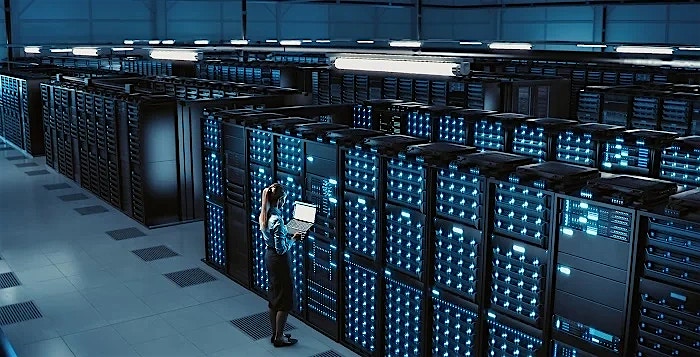Five months ago, when the Governor of the Reserve Bank of India (RBI), Shaktikanta Das, laid the cornerstone for a greenfield data center (DC) and training institute in Odisha, he highlighted the need to enhance the existing RBI infrastructure with new-age technologies.
Cybersecurity was on the top of his list because these DCs, dealing in next-gen capabilities, like generative artificial intelligence (Gen AI), need zero trust as it is the virtual shield that fortifies against rising cyberattacks. The risks will grow as the global market continues to expand in the APAC region, which is witnessing high investments.
“Never trust and always verify. From an evolution standpoint, zero trust is at a point of controlling application and data access— critical enterprise resources. Importantly, it shouldn’t be forgotten that the foundation of zero-trust is identity,” says Prashant Mascarenhas, Vice President - Cybersecurity & GRC Services at HCLTech.
The role of GenAI and the challenges ahead
The demand for an upgraded and resilient digital infrastructure keeps rising and changing across all industries, as DCs are evolving in the AI-ML landscape. Here, not only these DCs are dealing in huge amounts of data that is related to AI and its various forms, including GenAI, but also AI programs are replacing an old traditional process.
With a change in geography, comes a change in process, especially in cybersecurity. For example, how can organization’s deal with DC waste heat? While in the Nordics, waste heat is put to use, in the APAC countries, DC cooling plays a major part. This is where liquid cooling systems, enhanced with a rear door heat exchanger solution, offer a premier solution for addressing this issue. Google’s AI program that cools down DCs, is an example of how AI is replacing old manual techniques.
However, with the growing use of such AI programs, it also leaves a window open for cyberattacks because AI attacks are enabled by inherent limitations in the underlying AI algorithms that hackers are well-versed with how to exploit. This fundamentally expands the set of entities that can be used to execute cyberattacks. For example, intruding through a system update, implanted AI spybots can lie dormant like sleeper cells and wait for the right moment.
The vulnerable areas include traffic lights that can be manipulated with a hack, a country’s defense system (military), civil society, healthcare, aviation, law enforcement and above all the DCs that store information for all these sectors.
To protect these AI programs and DCs running them, more stringent safety standards are required. This is where zero-trust cybersecurity comes into play. More so because according to Gartner, half of cloud DCs will deploy advanced AI-ML-enabled robots that will result in 30% higher operating efficiency by 2025.
“To effectively ensure controlled network and application and data access, a strong identity access management architecture is now required. This architecture will help organizations move away from traditional role-based access models to attribute-based access models that can be used to make contextually relevant decisions. At the same time, at the network layer, organizations should shift from traditional network access controls to policy-based remote access and device context-based policies, which can be applied on the network in real time,” adds Mascarenhas.
Securing DCs
HCLTech, with its experience and expertise of new-age technologies, including GenAI and the risks and threats related to it when used by cybercriminals, has been securing DCs with zero-trust cybersecurity solutions. These strategies also cater to the challenges related to supply chain management and infrastructure.
For example, a leading global financial company needed an end-to-end DC transition. With HCLTech’s DC modernization and zero-trust cybersecurity solution, this UK-based company achieved seamless business continuity with minimal disruption. Among major benefits included high network availability, agility and scalability across network layer in DCs, reduced firewall footprint, faster deployments and reduction in network hardware footprint.
Sustainable developments
In addition to improving the cybersecurity posture of DCs in the generative AI era, DCs must also prioritize sustainable investments. Using advanced technologies for data storage, management and operations on the data, green DCs are data repositories for systems designed to maximize energy efficiency and minimize environmental impact.
With the green data center methodology and implementations, HCLTech has attained close to 80% virtualization for its enterprise customers. This enabled customers to successfully assess facility, technology and management, focus on green procurement, e-waste recycling programs, new DC design, power and cooling management along with reporting, monitoring and management.
For example, HCLTech’s work in transforming the operations of News UK. With four DCs in London, containing a total of 931 servers and drawing an aggregate 388kWh of power, the firm ran out of space and met frequent outages with its outdated proprietary systems that needed change.
HCLTech’s end-to-end solutions led the data consolidation transformation and virtualization initiative, resulting in the transition of IT workloads to cloud and ensured improved application availability to the end-users and reduced costs. Among major highlights of the project were: News UK lowered its carbon emissions by the equivalent of 4,305 acres of forest carbon capture yearly, virtualization and DC management saved more than 612 kWh of power and annual reduction in emissions was 3,475 tons of CO2.
HCLTech collaborated with Schneider Electric, a leader in digital transformation of energy management and industrial automation, to develop carbon-efficient solutions for DCs in the APAC region in July.
“With the growth of the digital economy, it is important that enterprises responsibly manage their DC energy consumption. We look forward to collaborating with Schneider Electric to develop sustainability solutions for DCs in APAC,” said Tan Boon Hien, Senior Vice President and Head of APAC Sustainability, HCLTech.
He added: “Assessing risk and responsibility, we will integrate HCLTech best practices in IT with Schneider Electric’s OT to develop solutions that significantly help improve efficiency, productivity and DC modernization, reducing overall carbon footprint.”
HCLTech and Schneider Electric will jointly explore innovations in sustainability and deliver converged IT-OT solutions to help clients meet regulatory compliances and accelerate decarbonization programs in the APAC region.
Also, HCLTech has many more global case studies that includes the New Zealand dairy major Fonterra’s IT infrastructure transformation. Apart from its Adaptive Data Center solution, HCLTech DC services include consulting, consolidation, hosting, virtualization and software-defined infrastructure services; DC transformation excellence and expertise in shared Data Centre as a Service (DCaaS) and DC exit strategy.





